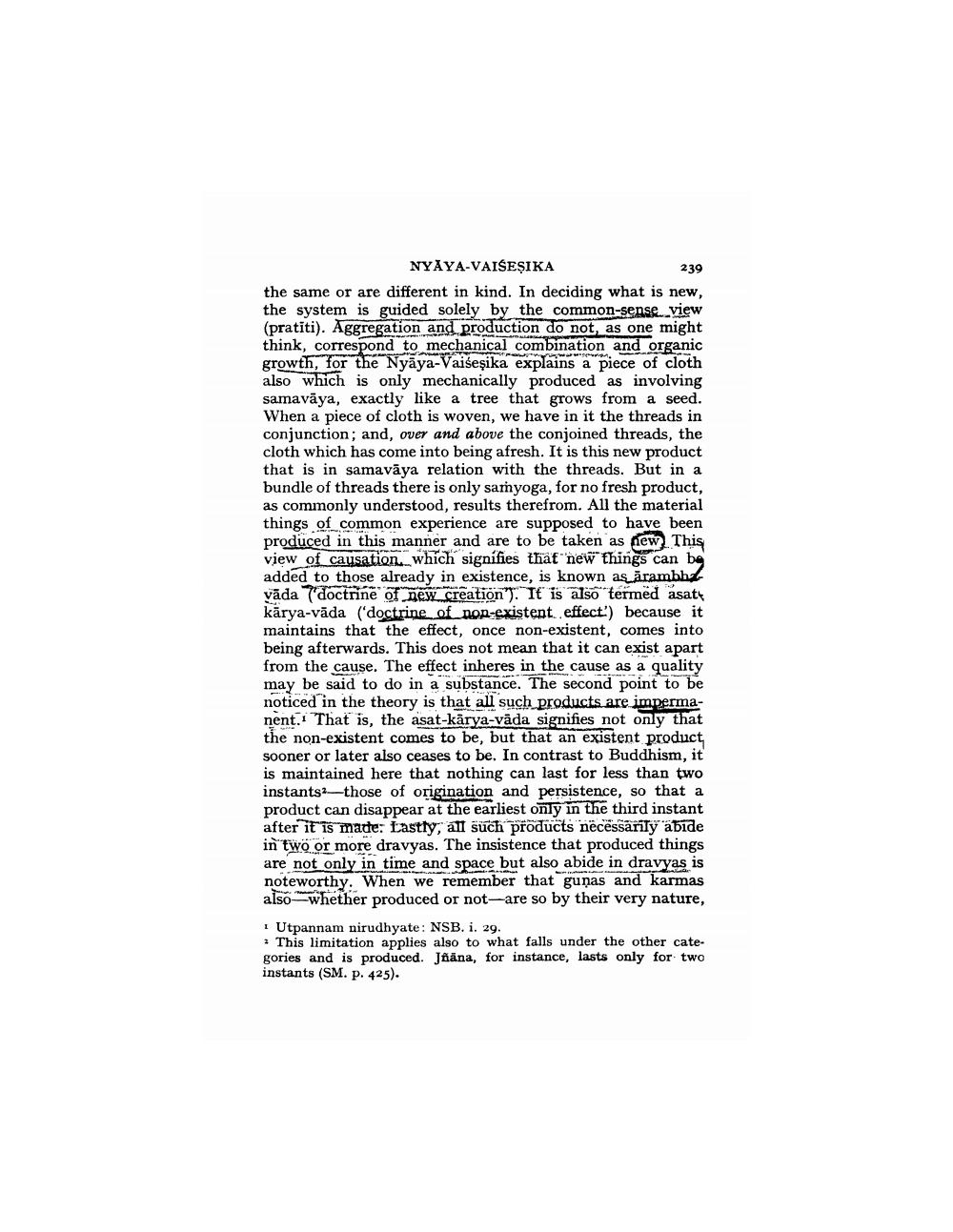________________
NYAYA-VAISESIKA
239 the same or are different in kind. In deciding what is new, the system is guided solely by the common-sense view (pratiti). Aggregation and production do not, as one might think, correspond to mechanical combination and organic growth, for the Nyāya-Vaiseşika explains a piece of cloth also which is only mechanically produced as involving samavāya, exactly like a tree that grows from a seed. When a piece of cloth is woven, we have in it the threads in conjunction; and, over and above the conjoined threads, the cloth which has come into being afresh. It is this new product that is in samavāya relation with the threads. But in a bundle of threads there is only samyoga, for no fresh product, as commonly understood, results therefrom. All the material things of common experience are supposed to have been produced in this manner and are to be taken as new This view of causation, which signifies that new things can be added to those already in existence, is known as ārambhal vāda doctrine of new creation). It is also termed asat kārya-vāda (doctrine of non-existent effect) because it maintains that the effect, once non-existent, comes into being afterwards. This does not mean that it can exist apart from the cause. The effect inheres in the cause as a quality may be said to do in a substance. The second point to be noticed in the theory is that all such products are impermanent. That is, the asat-karya-vāda signifies not only that the non-existent comes to be, but that an existent product sooner or later also ceases to be. In contrast to Buddhism, it is maintained here that nothing can last for less than two instants—those of origination and persistence, so that a product can disappear at the earliest only in the third instant after it is mate: Lastly, all such products necessarily abide in two or more dravyas. The insistence that produced things are not only in time and space but also abide in dravyas is noteworthy. When we remember that gunas and karmas also-whether produced or not-are so by their very nature, 1 Utpannam nirudhyate: NSB. i. 29. * This limitation applies also to what falls under the other categories and is produced. Jñana, for instance, lasts only for two instants (SM. P. 425).




